What is the best cover letter fonts? There's no single correct answer to this frequently asked question. But when it comes to choosing the right font for your own cover letter, you have quite a few great options.
The best fonts to use in a cover letter are those that are attractive, clean and easy to read.
You want hiring managers to take one glance at your cover letter and think “Looks good!” before they even start reading. Then you want them to read every word, focusing on your content — not distracted by a strange font choice or a font size that’s too big or too small.
If you choose some odd-looking, avant garde font to make your cover letter stand out, it will — but for all the wrong reasons. The recruiter is likely to frown and wonder why you chose such a weird font, and you’ve already got one strike against you.
There is no shortage of online advice about how to choose the best font for cover letters, including YouTube videos such as this one.
Choosing between serif and sans serif fonts
Your choice of cover letter font ultimately comes down to two basic font types: serif and sans serif.
Serif fonts: A serif is a decorative flourish, a small line or stroke added to the letters of the alphabet. For example, a capital A in a serif typeface will have a small horizontal line at the bottom of the two diagonal lines that form the primary part of the letter — they look like tiny pedestals that form a base for the letter.
Serifs are added to the parts of letters that end in mid-air; for example, a lowercase “i” as in “ice” will generally have a serif at the top pointing left and a serif at the bottom pointing both right and left. But you’ll probably never see a serif on the letter “o” because it’s a circle where no part of the letter ends in mid-air.
Sans serif fonts: Sans serif fonts don’t use serifs, so they look more like the alphabet displayed above the blackboard in an elementary school classroom. For example, if you print the letter “i” on a piece of paper with a pencil, you probably just draw a straight vertical line and add a dot on top of it. That’s sans serif. But if you add little decorations to the vertical line, those are serifs.
Should you use a serif or a non-serif font for cover letters?
There is no right or wrong answer to the question of using a serif or non-serif cover letter font, as long as it's easy on the eyes and doesn't distract your reader. Perhaps with the exception of header text only, you should use the same font consistently throughout.
It can be a matter of personal preference, as well as compatibility with the occupation, employer and industry. In terms of “personality,” serif fonts tend to be perceived as more traditional, formal, mature and reliable, while sans serif fonts are commonly described as sleek, modern and clean.
Chances are, you've heard the rule that serif fonts are easy to read. However, there's little weight to that argument.
Research into the theory suggests that serif fonts may produce a "tiny legibility increase" when the type is small or far away. However, the study authors concluded that overall there is "no difference in legibility between typefaces" that are serif or sans serif.
The top 8 cover letter fonts to use
Here is our list of good fonts for cover letters:
- Arial: Sort of like a Helvetica for the 21st century, Arial is a modern sans serif font popular for its legibility and clean lines. This one always makes the list of best fonts for cover letters.
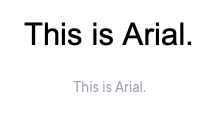
- Calibri: Another good sans serif option, Calibri is the current default font for Microsoft Word.

- Cambria: A good-looking serif font designed for computer screens, commissioned by Microsoft.
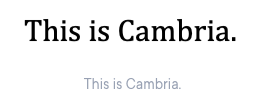
- Garamond: A classic serif font like you’d expect to see in a pricey new book by a top publisher.
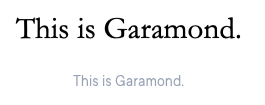
- Georgia: Currently a very popular serif font, said to read well in small sizes; call it the new Times New Roman.
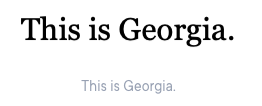
- Lato: A “serious but friendly” sans serif font created by Google for computer screens, but it doesn’t come with Microsoft Word applications.
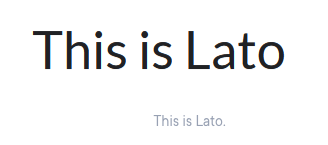
- Trebuchet: A sans serif font from Microsoft, also designed to look good online. If you're looking for the best fonts for cover letters, look no further than this one.
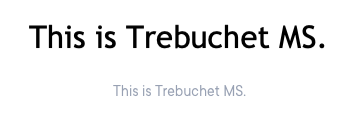
- Verdana: Another sans serif font from Microsoft, Verdana looks sort of a like a chilled-out version of Arial.
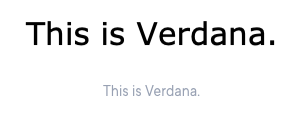
Fonts to NOT use in your cover letter
Now you know about the best fonts for cover letters, let's talk about the worst. Unless you’re really loving unemployment, don’t use these fonts in a cover letter:
- Brush Script: If you favor fonts that look like cursive, you might as well just grab a pen and write the letter with your own hand.
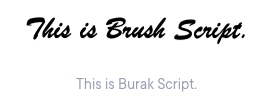
- Comic Sans: If you’re designing a comic book, go for it, but this is not one of the best cover letter fonts. Avoid it at all costs.
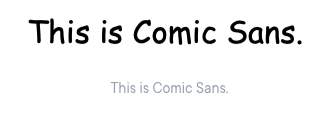
- Courier: May be useful for forging a document to look like it was written on a typewriter in the 1970s, but useless in a modern cover letter.

- Impact: Any font that’s this heavy and bold makes it look like you’re trying to compensate for something lacking in your pitch.
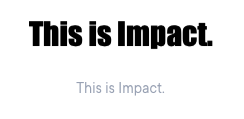
Situational fonts for cover letters
You’ll hear conflicting advice on certain fonts, these are generally considered situational fonts and you need to consider the image, character, and context for the job:
Helvetica: There’s nothing wrong with the world’s most famous font, but it’s so old that many consider it yesterday’s choice.
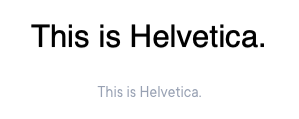
Times New Roman: Same goes for this classic serif font: It still works after all these years, but you won’t get points for originality.

Roboto, Open Sans, Ubuntu: These are clean and legible fonts that are widely used in the tech/IT industry, but they may not be as popular with more traditional jobs and employers. You can feel a bit safer using these when applying to a software company or an IT startup. Just be advised that you might end up with an overly sleek and techy feel to your document.
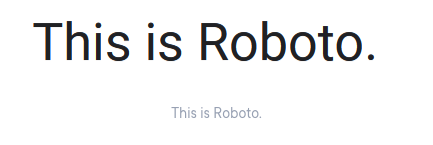


Cover letter font size and spacing
Whatever font you choose, do not make the mistake of running it too big or too small. Too big and it looks childish; too small and the reader needs a magnifying glass. And you can always count on resume.io for occupation-specific advice and a top-of-the-line online cover letter builder to boost your career!
What is the correct font size for a cover letter?
A good rule of thumb is to start with a 12-point font size. Font size depends on the font style; for some fonts, 12 points could be too large or 10 points too small. Getting it right may take some trial and error.
People sometimes ask if an 11-point font is OK for a cover letter, and the answer is yes. Font sizes are typically described in even numbers, but there’s no reason you can’t make your font size 11, or even 11.3, as long as it looks good on the page.
What font size is too small for a cover letter?
Most cover letters should be one page only, and most first drafts exceed one page, so writers resort to downsizing the font to make it fit. This IS an allowable tactic, but don’t make it any smaller than 10 points.
Cover letter spacing and white space
In addition to choosing the right font size for your application letter, you need to set appropriate cover letter margins — one inch on the top, bottom, left and right is a good rule.
Another consideration is cover letter spacing. Every typeface comes with a default amount of “leading” (rhymes with “sledding”), which means the amount of space between lines. This setting is adjustable, but don’t downsize it to squeeze your letter onto one page. Allow for an appropriate amount of white space in your cover letter, or it will look like you’re trying to cram 12 pounds of stuff into a 10-pound bag.
What do the best cover letter fonts look like?
Look no further than resume.io for samples of what you might decide is the best font for cover letters. And if you’re ready to create your own cover letter, this is also the right place to get started right away. Check out our professionally designed, field-tested cover letter templates in four design categories: simple, creative, modern and professional.
Our top-of-the-line cover letter builder tool makes it easy to customize your own version for hassle-free, high-quality results in no time.
You can always count on resume.io for the advice to boost your career! Our job-winning resources include a wide selection of occupation-specific writing guides and free cover letter examples.
Key takeaways
- Readability is the deciding factor for choosing a cover letter font that’s clean, attractive and non-distracting.
- Our top 8 list of cover letter fonts includes a good selection of serif and non-serif font types to suit your preference.
- With good reason, several fonts belong on a “do not use in a cover letter” list. Others may be okay in certain situations, depending on the image, character and context for the job.
- Cover letter font size and spacing are vitally important considerations, along with font style.
Best of luck with choosing the right fonts and formatting choices for your cover letter. And even if you’ve forgotten everything we’ve said here, remember: Don’t use Comic Sans!






